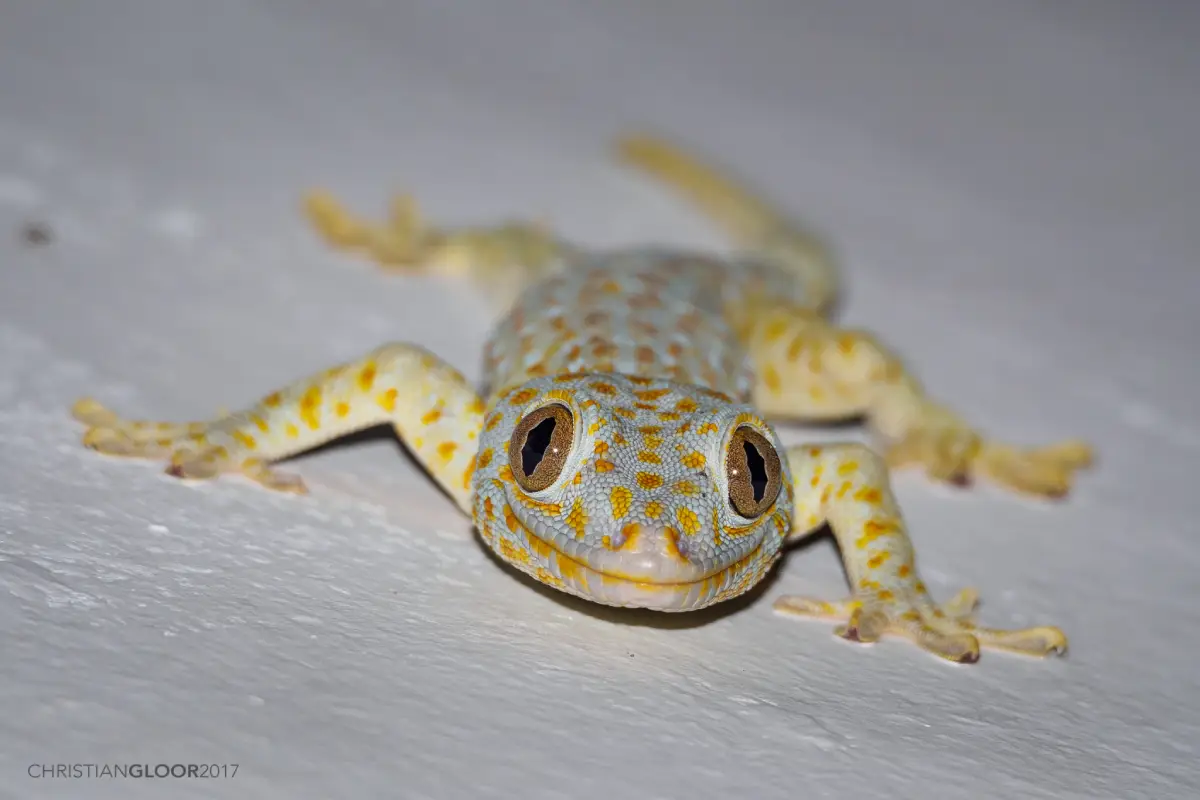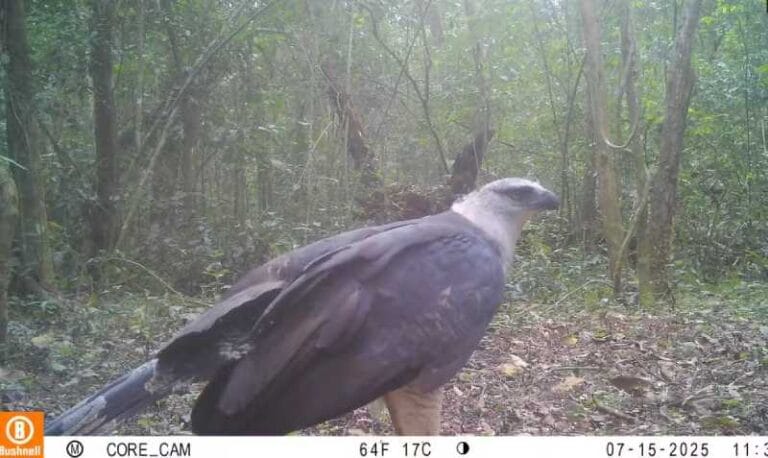The ‘Sixth Sense’ of Geckos

The tokay gecko (Gekko gecko), known for its vibrant colors and distinct spots, may also possess a hidden sensory ability akin to a “sixth sense.” Recent research shows that these geckos can detect low-frequency vibrations through a part of their inner ear known as the saccule, a small organ typically associated with balance. This ability, detailed in an October 4 study published in Current Biology, provides new insights into how certain sensory pathways that are normally linked to balance can play a dual role in hearing for reptiles and potentially other animals.
The Unique Role of the Saccule in Gecko Perception
For most animals, the ear is primarily designed to capture airborne sounds, but researchers discovered that the saccule in tokay geckos can detect vibrations passing through solid mediums, such as the ground. “The ear, as we know it, hears airborne sound. But this ancient inner pathway, which is typically linked to balance, helps geckos detect vibrations that travel through mediums like the ground or water,” said study co-author Catherine Carr, a biologist from the University of Maryland. This sensory pathway, Carr notes, is common among fish and amphibians, suggesting that it has been preserved over evolutionary time and now serves as a specialized sensory function for geckos on land.
The saccule is sensitive to vibrations ranging from 50 to 200 Hz, a frequency range that geckos’ ears do not naturally detect. While geckos are able to hear airborne sounds like many other animals, this vibrational detection allows them to sense their environment in a unique way. “This pathway exists in amphibians and fish, and now it’s proven to be preserved in lizards as well,” Carr adds. These findings demonstrate how hearing evolved from underwater environments to terrestrial landscapes, providing more detail on the sensory evolution that shaped the auditory system in vertebrates.
Observing Geckos’ Sensory Pathways in the Lab
In their study, the research team observed the response of the tokay gecko’s auditory system to a variety of controlled stimuli in the laboratory. These experiments showed how the geckos’ saccule works alongside their normal hearing pathways, contributing to a more comprehensive way of sensing their surroundings. Unlike many reptiles, geckos can pick up airborne sounds, meaning that the saccule plays a unique but complementary role to the hearing system.
While most reptiles do not respond to airborne sounds as acutely as other animals, the gecko’s ability to detect vibrations may indicate a broader range of communication and sensory processing than previously believed. Dawei Han, a former graduate student at the University of Maryland and study co-author, explains, “A lot of snakes and lizards were thought to be ‘mute’ or ‘deaf’ in the sense that they do not vocalize sounds or hear sounds well. But it turns out they could potentially be communicating via vibrational signals using this sensory pathway instead, which really changes the way scientists have thought about animal perception overall.”
Evolutionary Implications for Sensory Systems in Vertebrates
The saccule’s dual role in balance and vibration detection in the tokay gecko has intriguing implications for evolutionary biology. The study suggests that vertebrate sensory systems evolved with more complexity and gradual adaptation from aquatic to terrestrial environments than previously assumed. For scientists, the findings highlight how sensory pathways adapt to new habitats and environmental challenges, offering insights into the evolutionary steps that led from fish to land-dwelling vertebrates, including humans.
Potential Connections to Human Sensory Systems
Although the saccule’s function in geckos may seem unique to reptiles, some similarities exist between this reptilian sensory pathway and human sensory systems. Carr explained the parallel with human perception by describing the experience of feeling intense vibrations at a live concert. “Think about when you’re at a live rock concert. It’s so loud that you can feel your whole head and body vibrate in the sound field. You can feel the music, rather than just hearing it,” she says. This bodily sensation, Carr suggests, might involve the human vestibular system, hinting at a potential overlap between hearing and balance.
These findings, according to Carr and Han, may inspire further research into how the vestibular system in mammals, including humans, interacts with hearing. This link between hearing and balance opens new avenues in the study of hearing disorders, especially those related to balance issues. By understanding this shared sensory pathway, scientists hope to uncover possible new treatments or insights into the underlying causes of such disorders.
Broadening Our Understanding of Animal Perception
The study’s results extend beyond the world of reptiles and touch upon the broader topic of sensory perception across animal species. “The implications of this research extend beyond the world of reptiles,” says Han. “As we uncover these hidden mechanisms, we’re also gaining a richer and more nuanced picture of how animals perceive and interact with their environments—and potentially, new insights into our own sensory experiences.” By studying creatures like the tokay gecko, researchers can gain a deeper understanding of the common evolutionary threads in sensory systems and reveal the complex ways that animals—including humans—interact with the world around them.
The discovery of this vibrational “sixth sense” in tokay geckos provides scientists with a unique look into the fascinating evolutionary adaptations that shape sensory experiences across the animal kingdom, deepening our understanding of the diverse ways life has adapted to perceive and navigate the environment.






